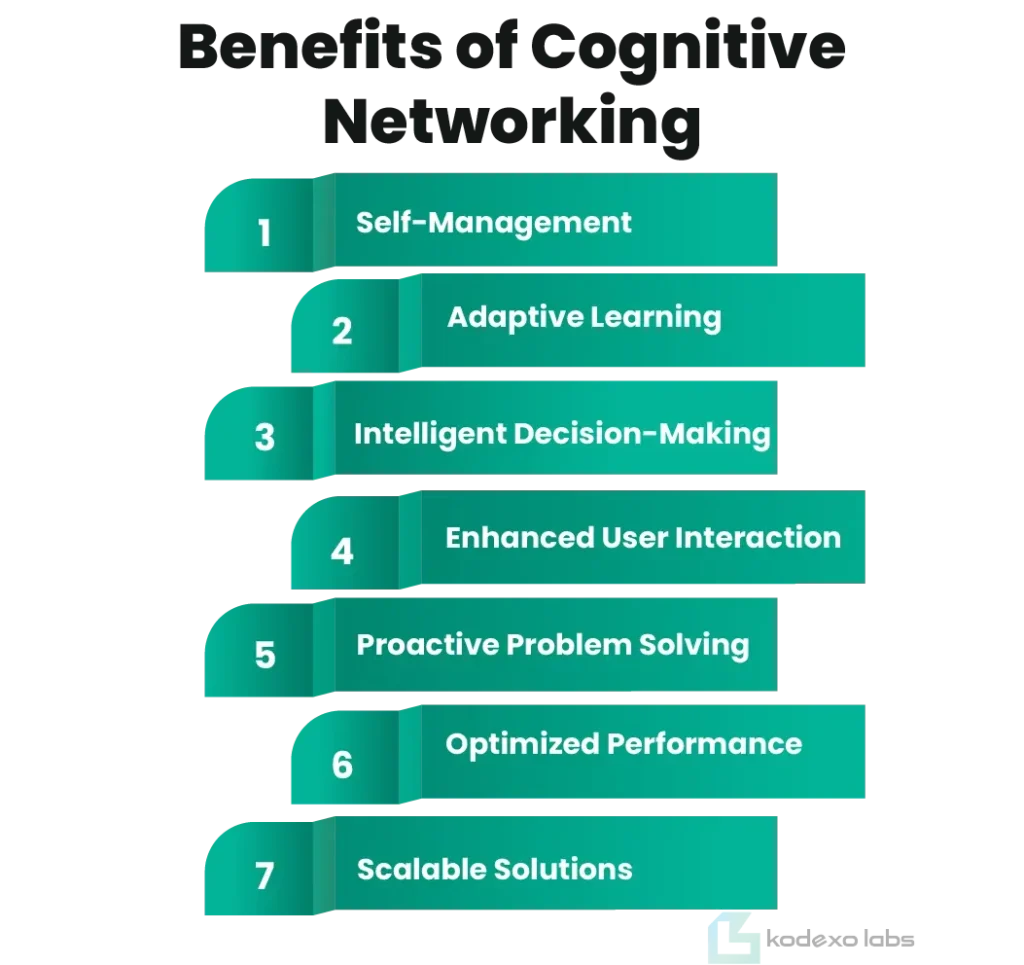
Contents
In today’s world, networks with AI are changing how we connect and communicate. But what exactly are they? Let’s explore how artificial intelligence in networking shapes modern connections.
What Are Networks with AI?
Networks with AI blend traditional networking with AI technologies. This mix creates smarter, more efficient systems. But why use AI in networks?
Think of a regular network as a busy city. Traffic lights manage the flow, but sometimes jams happen. AI networks act like smart traffic managers. They predict and prevent jams, ensuring smooth movement.

Key Features of AI Networks:

- Self-Learning Systems: They get better over time.
- Real-Time Data Processing: Handle information instantly.
- Predictive Analytics: Anticipate future needs.
- Automated Management: Reduce manual tasks.
- Enhanced Security: Protect against threats.
- Scalability: Grow with your needs.
Using networks with Artificial Intelligence means better performance and fewer issues. It’s like upgrading from a manual to an automatic system.
Smart Network Architecture:
Smart network architecture is the backbone of networks with Artificial Intelligence. It designs networks to be flexible and intelligent.
Imagine building a house with smart rooms. Each room can adjust lights and temperature automatically. Similarly, smart architecture allows networks to adapt to changes effortlessly.
Benefits Include:
- Flexibility: Easily adjust to new demands.
- Efficiency: Optimize resource use.
- Reliability: Reduce downtime.
- Cost-Effectiveness: Lower operational costs.
- Security: Enhance protection measures.
- User-Friendly Management: Simplify control processes.
With smart network architecture, you get a strong foundation that supports AI-driven features seamlessly.
AI-Driven Network Management:
Managing a network can be complex. AI-driven network management simplifies this by automating tasks and providing insights.
Have you ever tried organizing a messy desk? It can be overwhelming. AI development takes care of the clutter, keeping everything in order effortlessly.
Advantages of AI-Driven Management:

- Automated Configuration: Set up quickly without errors.
- Proactive Maintenance: Fix issues before they arise.
- Resource Allocation: Distribute resources efficiently.
- Performance Monitoring: Track network health continuously.
- Troubleshooting Assistance: Identify and solve problems faster.
- User Experience Enhancement: Improve overall satisfaction.
By using AI-driven network management, we can maintain networks more effectively and focus on what matters most.
Machine Learning Networks:
Machine learning networks are a type of networks with AI that learn from data. They improve their performance without being explicitly programmed.
Think of machine learning as teaching a child. The more they learn, the better they become. Similarly, machine learning networks grow smarter with more data.
Key Components:
- Data Collection: Gather information from various sources.
- Data Processing: Clean and organize the data.
- Model Training: Teach the network using the data.
- Prediction and Analysis: Make informed decisions.
- Continuous Learning: Keep improving over time.
- Feedback Loops: Use results to refine processes.
- Integration with Existing Systems: Work seamlessly with current infrastructure.
Machine learning networks enable networks with Artificial Intelligence to adapt and respond to new challenges efficiently.
AI-Powered Network Security:
Security is crucial for any network. AI-powered network security uses AI to protect against threats and vulnerabilities.
Imagine having a smart lock that detects and blocks intruders instantly. AI does the same for networks, ensuring data stays safe.
Features of AI-Powered Security:

- Threat Detection: Identify risks quickly.
- Automated Responses: Act immediately to threats.
- Behavior Analysis: Spot unusual activities.
- Fraud Prevention: Guard against deceitful actions.
- Data Encryption: Secure information effectively.
- Access Control: Manage who can enter.
- Regular Updates: Stay ahead of new threats.
With AI-powered network security, we can create safer environments for our data and operations.
Autonomous Networks:
Autonomous networks operate with minimal human intervention. They make decisions on their own using AI.
Picture a self-driving car that navigates without a driver. Autonomous networks manage themselves similarly, ensuring smooth operations.
Benefits of Autonomous Networks:
- Reduced Human Error: Fewer mistakes in management.
- 24/7 Operation: Always available without breaks.
- Scalability: Easily expand without hassle.
- Cost Savings: Lower management costs.
- Quick Adaptation: Respond to changes swiftly.
- Enhanced Performance: Optimize continuously.
- Improved Reliability: Maintain consistent service.
Autonomous networks empower us to handle complex tasks effortlessly, making networks with Artificial Intelligence even more powerful.
Neural Networks for Communication:
Neural networks for communication use AI to enhance how data is transmitted across networks. These networks mimic the human brain to process information efficiently.
Think of neural networks as a team of smart workers handling different tasks. They work together to ensure data moves smoothly and quickly.
Advantages of Neural Networks:

- Efficient Data Routing: Find the best paths for data.
- Error Detection and Correction: Spot and fix issues automatically.
- Adaptive Learning: Improve based on network usage.
- Resource Optimization: Use network resources wisely.
- Enhanced Communication Speed: Transfer data faster.
- Scalability: Support growing network demands.
- Resilience: Recover quickly from disruptions.
By integrating neural networks for communication, networks with Artificial Intelligence become more reliable and efficient.
Intelligent Network Optimization:
Intelligent network optimization uses AI to fine-tune network performance. It ensures that networks run at their best.
Imagine tuning a guitar to get the perfect sound. Similarly, intelligent optimization adjusts network settings for peak performance.
Key Benefits:
- Performance Enhancement: Improve network speed and reliability.
- Resource Efficiency: Maximize the use of available resources.
- Cost Reduction: Lower operational expenses.
- Dynamic Adjustment: Adapt to changing conditions.
- User Experience Improvement: Provide better service to users.
- Energy Efficiency: Reduce power consumption.
- Maintenance Simplification: Make upkeep easier.
Intelligent network optimization ensures that networks with Artificial Intelligence perform smoothly and efficiently.
Deep Learning in Networking:
Deep learning in networking is a subset of AI that uses complex algorithms to analyze large amounts of data. It helps networks make smarter decisions.
Think of deep learning as a super-smart assistant that can handle vast information quickly and accurately.
Features of Deep Learning:
- Advanced Data Analysis: Understand complex data patterns.
- Predictive Capabilities: Forecast network needs.
- Automation: Streamline network operations.
- Enhanced Security Measures: Detect sophisticated threats.
- Personalization: Tailor services to user needs.
- Scalability: Handle increasing data volumes.
- Continuous Improvement: Learn and adapt over time.
With deep learning in networking, networks with Artificial Intelligence become more intelligent and capable of handling intricate tasks.
Cognitive Networking Solutions:
Cognitive networking solutions use AI to create networks that think and learn. These solutions make networks smarter and more responsive.
Imagine a network that can understand and respond to your needs without you telling it what to do. That’s what cognitive solutions achieve.
Benefits of Cognitive Networking:

- Self-Management: Handle tasks without human input.
- Adaptive Learning: Adjust based on usage patterns.
- Intelligent Decision-Making: Make informed choices automatically.
- Enhanced User Interaction: Improve how users engage with the network.
- Proactive Problem Solving: Address issues before they escalate.
- Optimized Performance: Maintain high efficiency.
- Scalable Solutions: Grow with your network needs.
Cognitive networking solutions make networks with Artificial Intelligence more adaptable and user-friendly.
Self-Learning Network Systems:
Self-learning network systems use AI to automatically improve their operations. They learn from data and experiences to enhance performance.
Think of a self-learning system as a student who gets better with every lesson. These networks continuously evolve to meet new challenges.
Did You Know? According to a Forbes, AI for network orchestration is expected to increase from USD 6 billion in 2024 to a whopping USD 20 billion by 2028, which is a stupendous 240% increase.
Key Features:
- Continuous Improvement: Keep getting better over time.
- Automated Updates: Apply changes without manual intervention.
- Adaptive Responses: Adjust to new situations quickly.
- Data-Driven Insights: Use data to guide decisions.
- Efficiency Boost: Streamline network processes.
- Error Reduction: Minimize mistakes through learning.
- User-Centric Design: Focus on improving user experience.
Self-learning network systems ensure that networks with Artificial Intelligence stay up-to-date and efficient.
Predictive Network Analytics:
Predictive network analytics uses AI to forecast future network behaviors and needs. It helps in planning and preventing issues before they occur.
Imagine knowing when a storm is coming so you can prepare in advance. Predictive analytics does the same for networks.

Advantages:
- Early Issue Detection: Spot problems before they happen.
- Resource Planning: Allocate resources efficiently.
- Performance Forecasting: Predict network performance trends.
- Capacity Management: Ensure the network can handle growth.
- Risk Assessment: Identify potential vulnerabilities.
- Cost Management: Plan budgets based on forecasts.
- Enhanced Decision-Making: Make informed choices with data insights.
With predictive network analytics, networks with Artificial Intelligence become proactive rather than reactive.
Edge AI in Networks:
Edge AI brings AI processing closer to data sources. This approach enhances networks with Artificial Intelligence by reducing latency and improving speed.
Think of edge AI as having a mini brain near each device. It processes information quickly without sending it far away.
Advantages of Edge AI:
- Low Latency: Faster response times.
- Bandwidth Efficiency: Reduce data transmission needs.
- Enhanced Privacy: Keep data local and secure.
- Real-Time Processing: Handle tasks instantly.
- Scalability: Support more devices efficiently.
- Reliability: Maintain operations even with limited connectivity.
- Cost-Effective Deployment: Lower infrastructure costs.
By integrating edge AI in networks, we achieve smarter and more efficient systems that meet modern demands.
AI-Enabled IoT Networks:
AI-enabled Internet of Things (IoT) networks combine AI with IoT devices to create intelligent systems. This integration makes networks more responsive and efficient.
Imagine your smart home devices working together seamlessly. AI makes IoT networks smarter by coordinating these devices effectively.
Key Benefits:
- Enhanced Connectivity: Improve how devices communicate.
- Smart Automation: Automate tasks based on data insights.
- Energy Efficiency: Optimize power usage across devices.
- Improved Security: Protect IoT devices with AI-driven measures.
- Data Management: Handle large volumes of IoT data efficiently.
- Scalability: Easily add more devices to the network.
- User Personalization: Tailor services to individual needs.
- Predictive Maintenance: Fix devices before they fail.
AI-enabled IoT networks make networks with Artificial Intelligence more versatile and user-friendly.
Adaptive Network Technologies:
Adaptive network technologies use AI to adjust network settings based on current conditions. This flexibility ensures optimal performance.
Think of adaptive technologies as a thermostat that adjusts temperature based on the room’s needs. Similarly, these technologies tweak network settings for the best results.
Features:
- Dynamic Configuration: Change settings on the fly.
- Real-Time Monitoring: Keep an eye on network performance continuously.
- Automatic Scaling: Adjust resources based on demand.
- Optimized Traffic Management: Direct data efficiently.
- Energy Management: Reduce power usage when possible.
- Fault Tolerance: Maintain operations during issues.
- User Experience Enhancement: Provide smooth and reliable service.
With adaptive network technologies, networks with Artificial Intelligence stay efficient and responsive to changes.
AI-Based Traffic Management:
AI-based traffic management uses AI to control data flow in networks. It ensures data moves smoothly and efficiently.
Imagine a highway with smart signs that change based on traffic. AI-based traffic management does the same for data, directing it where needed most.
Benefits Include:
- Reduced Congestion: Prevent data jams.
- Improved Speed: Faster data transmission.
- Efficient Resource Use: Optimize bandwidth.
- Automatic Adjustments: Adapt to changes quickly.
- Enhanced Reliability: Fewer interruptions.
- Cost Savings: Lower operational costs.
- Better User Experience: Smoother connections.
With AI-based traffic management, we can ensure that our networks run smoothly and efficiently. We discovered that in the 2023 survey, 90 percent of respondents reported they were currently engaged with AI, either at the assessment/pilot stage or at the implementation/using stage. This level of sustained engagement shows that AI is successfully permeating into many parts of the telecom value chain.
Distributed AI Networks:
Distributed AI networks spread AI tasks across multiple devices. This setup makes networks more resilient and faster.
Think of distributed AI like a team working together. Each member handles a part of the task, making the whole process quicker and more efficient.
Advantages of Distributed AI Networks:

- Enhanced Performance: Faster processing speeds.
- Increased Reliability: Less chance of total failure.
- Scalability: Easily add more devices.
- Lower Latency: Quick response times.
- Cost Efficiency: Reduce the need for central resources.
- Flexibility: Adapt to different tasks seamlessly.
- Improved Security: Spread out data to prevent breaches.
By using distributed AI networks, we make networks with Artificial Intelligence stronger and more adaptable.
AI-Assisted Network Configuration:
AI-assisted network configuration uses AI to set up and manage network settings. It makes configuration easier and more accurate.
Imagine setting up your phone’s Wi-Fi with just a tap. AI-assisted network configuration does this on a larger scale, handling complex settings effortlessly.
Key Benefits:
- Ease of Setup: Simplify network configuration.
- Error Reduction: Minimize manual mistakes.
- Time Savings: Configure networks faster.
- Automatic Updates: Keep settings current.
- Enhanced Performance: Optimize network settings.
- User-Friendly: Make management accessible.
- Scalability: Handle growing network demands.
- Consistency: Maintain uniform settings across the network.
With AI-assisted network configuration, we can set up and manage networks with Artificial Intelligence efficiently.
Smart Routing Algorithms:
Smart routing algorithms use AI to find the best paths for data. They ensure data travels the quickest and most reliable routes.
Think of smart routing like a GPS that finds the fastest way home. Smart routing algorithms guide data through the best paths in the network.
Advantages of Smart Routing:
- Optimized Paths: Choose the fastest routes.
- Load Balancing: Distribute data evenly.
- Reduced Latency: Faster data delivery.
- Increased Reliability: Fewer lost packets.
- Adaptive Routing: Change paths as needed.
- Energy Efficiency: Lower power usage.
- Scalability: Support more data traffic.
By implementing smart routing algorithms, networks with Artificial Intelligence become more efficient and reliable.
AI Integration in Telecommunications:
AI integration in telecommunications brings AI into phone and internet services. It enhances how we communicate.
Imagine your phone network automatically fixing issues. AI integration in telecommunications makes this possible, improving service quality.
Key Features:
- Automated Customer Support: AI-powered chatbots assist users.
- Network Optimization: Enhance performance continuously.
- Predictive Maintenance: Fix issues before they occur.
- Fraud Detection: Identify and prevent scams.
- Personalized Services: Tailor offerings to users.
- Efficient Resource Management: Optimize network resources.
- Enhanced Security: Protect against cyber threats.
- Data Analytics: Gain insights from using data analytics.
With AI integration in telecommunications, we create more reliable and user-friendly communication networks.
Intelligent Communication Networks:
Intelligent communication networks use AI to manage and improve how data is sent and received. They make communication faster and smarter.
Think of intelligent networks as having a brain that controls data flow. They adjust settings in real-time to ensure the best performance.
Benefits of Intelligent Communication Networks:
- Faster Data Transmission: Speed up communication.
- Improved Quality: Enhance signal clarity.
- Adaptive Management: Respond to changes instantly.
- Enhanced Security: Protect data effectively.
- Efficient Resource Use: Optimize bandwidth and power.
- Scalability: Grow with user demands.
- Reduced Downtime: Maintain continuous service.
- Better User Experience: Provide seamless connections.
Using intelligent communication networks, we ensure that networks with Artificial Intelligence deliver top-notch performance.
AI in Network Infrastructure:
AI in network infrastructure involves using AI to build and maintain the physical and virtual components of networks. It makes infrastructure smarter and more efficient.
Imagine building roads that can change lanes based on traffic. AI in network infrastructure allows networks to adjust to demand dynamically.
Key Benefits:

- Enhanced Efficiency: Optimize infrastructure usage.
- Automated Maintenance: Detect and fix issues automatically.
- Scalable Solutions: Easily expand network capacity.
- Improved Security: Strengthen defenses against threats.
- Cost Reduction: Lower operational expenses.
- Real-Time Monitoring: Keep track of network health.
- Resource Optimization: Use resources wisely.
- Better Performance: Ensure high-speed connections.
With AI in network infrastructure, we build networks with Artificial Intelligence that are robust and efficient.
Artificial Neural Communication Systems:
Artificial neural communication systems use AI inspired by the human brain to manage data. They process information in complex ways for better performance.
Think of these systems as a team of experts handling different tasks. Artificial neural communication systems work together to manage data efficiently.
Advantages of Artificial Neural Communication Systems:
- Advanced Data Processing: Handle complex data tasks.
- Improved Accuracy: Reduce errors in data handling.
- Adaptive Learning: Learn from network usage patterns.
- Enhanced Security: Detect and prevent sophisticated threats.
- Efficient Resource Management: Optimize network resources.
- Scalable Architecture: Support growing data demands.
- Real-Time Decision Making: Make quick adjustments as needed.
By integrating artificial neural communication systems, networks with Artificial Intelligence become more intelligent and capable.
AI-Enhanced Data Transmission:
AI-enhanced data transmission uses AI to improve how data is sent and received. It ensures data moves quickly and reliably.
Imagine sending a letter with a smart sorting system that directs it efficiently. AI-enhanced data transmission does this for digital data, making sure it arrives swiftly.
Key Features:
- Faster Data Transfer: Speed up communication.
- Reliable Connections: Ensure data reaches its destination.
- Error Correction: Fix data issues automatically.
- Optimized Bandwidth Use: Use resources efficiently.
- Adaptive Transmission: Adjust based on network conditions.
- Enhanced Security: Protect data during transmission.
- Scalability: Handle increasing data volumes.
- Real-Time Monitoring: Track data flow continuously.
With AI-enhanced data transmission, we ensure that networks with Artificial Intelligence deliver data smoothly and securely
Smart Connectivity Solutions:
Smart connectivity solutions use AI to enhance how devices connect and communicate. These solutions make networks more efficient and reliable.
Imagine your home Wi-Fi that adjusts itself based on device usage. Smart connectivity solutions do this on a larger scale, ensuring all devices work smoothly together.
Benefits of Smart Connectivity Solutions:
- Improved Device Coordination: Devices communicate seamlessly.
- Enhanced Signal Strength: Stronger and more stable connections.
- Dynamic Bandwidth Allocation: Allocate resources where needed.
- Energy Efficiency: Reduce power consumption.
- Automatic Configuration: Set up connections effortlessly.
- Scalable Infrastructure: Easily add more devices.
- Better User Experience: Smooth and uninterrupted service.
With smart connectivity solutions, we create networks with Artificial Intelligence that are both powerful and easy to use.
AI-Managed Network Operations:
AI-managed network operations use AI to oversee and control network activities. This approach makes managing networks simpler and more effective.
Have you ever tried managing multiple tasks at once? It can be overwhelming. AI-assisted network operations handle these tasks automatically, keeping everything running smoothly.
Advantages of AI-Managed Network Operations:

- Automated Task Management: Handle routine tasks without human input.
- Proactive Issue Resolution: Fix problems before they escalate.
- Resource Optimization: Use network resources efficiently.
- Continuous Monitoring: Keep an eye on network health 24/7.
- Enhanced Security Measures: Protect against cyber threats.
- Cost Efficiency: Reduce operational expenses.
By using AI-assisted network operations, we ensure that networks with Artificial Intelligence operate at peak performance with minimal effort.
AI-Managed Network Operations:
AI-managed network operations use AI to oversee and control network activities. This approach makes managing networks simpler and more effective.
Have you ever tried managing multiple tasks at once? It can be overwhelming. AI-assisted network operations handle these tasks automatically, keeping everything running smoothly.
Advantages of AI-Managed Network Operations:
- Automated Task Management: Handle routine tasks without human input.
- Proactive Issue Resolution: Fix problems before they escalate.
- Resource Optimization: Use network resources efficiently.
- Continuous Monitoring: Keep an eye on network health 24/7.
- Enhanced Security Measures: Protect against cyber threats.
- Cost Efficiency: Reduce operational expenses.
By using AI-assisted network operations, we ensure that networks with Artificial Intelligence operate at peak performance with minimal effort.
Learning Algorithms for Networks:
Learning algorithms for networks are AI systems that enable networks to learn and adapt from data. These algorithms make networks smarter over time.
Think of these algorithms as teachers for the network. They help the network understand patterns and improve its performance based on what it learns.
Key Components:
- Data Collection: Gather information from various sources.
- Pattern Recognition: Identify trends and anomalies.
- Adaptive Learning: Adjust based on new data.
- Decision Making: Make informed choices automatically.
- Feedback Integration: Use results to refine processes.
- Continuous Improvement: Keep enhancing network performance.
Learning algorithms for networks empower networks with Artificial Intelligence to become more intelligent and responsive to changing needs.
AI-Infused Network Protocols:
AI-infused network protocols integrate AI into the rules that govern data transmission. This integration makes data transfer more efficient and secure.
Imagine having a set of smart rules that adjust based on traffic conditions. AI-infused network protocols do this for data, ensuring it moves smoothly and safely.x
Benefits of AI-Infused Network Protocols:
- Dynamic Adjustment: Change protocols based on real-time data.
- Enhanced Security: Automatically detect and block threats.
- Optimized Data Flow: Improve the efficiency of data transmission.
- Reduced Latency: Speed up data delivery.
- Scalability: Support growing network demands.
- Improved Reliability: Maintain consistent performance.
With AI-infused network protocols, networks with Artificial Intelligence achieve higher levels of performance and security.
Automated Network Diagnostics with AI:
Automated network diagnostics with AI use AI to identify and fix network issues automatically. This technology makes maintaining networks easier and more effective.
Have you ever dealt with unexpected network problems? It can be frustrating. Automated network diagnostics with AI find and solve these issues quickly, keeping your network running smoothly.
Features of Automated Network Diagnostics with AI:
- Real-Time Problem Detection: Spot issues as they happen.
- Automatic Troubleshooting: Fix problems without manual intervention.
- Predictive Maintenance: Prevent issues before they occur.
- Comprehensive Reporting: Provide detailed insights into network health.
- Error Analysis: Understand the root causes of problems.
- System Optimization: Enhance overall network performance.
- User-Friendly Interface: Make diagnostics accessible to all users.
By implementing automated network diagnostics with AI, we maintain networks with Artificial Intelligence that are reliable and efficient.
AI-Driven Bandwidth Allocation
AI-driven bandwidth allocation uses AI to distribute network resources where they are needed most. This ensures that all applications run smoothly without interruptions.
Imagine a busy highway where AI directs cars to less crowded lanes. AI-driven bandwidth allocation does the same for data, ensuring efficient use of network resources.
Advantages of AI-Driven Bandwidth Allocation:
- Optimal Resource Distribution: Allocate bandwidth based on demand.
- Improved Performance: Ensure high-priority applications run smoothly.
- Reduced Congestion: Prevent data bottlenecks.
- Scalability: Easily adjust to increasing network demands.
- Enhanced User Experience: Provide consistent and reliable connections.
- Cost Efficiency: Maximize the use of available resources.
- Real-Time Adjustments: Adapt to changes instantly.
With AI-driven bandwidth allocation, we create networks with Artificial Intelligence that are both flexible and efficient.
Cognitive Network Monitoring
Cognitive network monitoring uses AI to observe and analyze network activities intelligently. This approach provides deeper insights and proactive management.
Think of cognitive monitoring as having a smart assistant that keeps track of everything happening in your network. It alerts us to issues before they become serious problems.
Benefits of Cognitive Network Monitoring:

- Advanced Analytics: Gain deeper insights into network performance.
- Proactive Issue Detection: Identify and address problems early.
- Enhanced Visibility: Monitor all aspects of the network comprehensively.
- Automated Alerts: Receive notifications for critical events.
- Behavior Analysis: Understand user and device activities.
- Performance Optimization: Continuously improve network efficiency.
- Scalable Monitoring: Handle growing network sizes with ease.
By leveraging cognitive network monitoring, we ensure that networks with Artificial Intelligence are always performing at their best.
AI for Network Reliability:
AI for network reliability uses AI to ensure that networks remain stable and dependable. This technology minimizes downtime and maintains consistent performance.
Imagine having a guardian that watches over your network, ensuring everything runs smoothly. AI for network reliability provides this constant protection, keeping networks with Artificial Intelligence dependable.
Based on a detailed survey of more than 8,000 business and IT leaders around the world, which revealed that 84% of organizations surveyed expect AI to have a significant or very significant impact on their networking business.
Key Features:
- Continuous Monitoring: Keep track of network status 24/7.
- Predictive Maintenance: Address issues before they cause downtime.
- Redundancy Management: Ensure backup systems are ready.
- Fault Tolerance: Maintain operations during failures.
- Automated Recovery: Quickly restore services after disruptions.
- Performance Tracking: Monitor key performance indicators.
- Adaptive Responses: Adjust to changing network conditions.
With AI for network reliability, we build networks with Artificial Intelligence that users can trust and depend on.
Intelligent Network Traffic Analysis:
Intelligent network traffic analysis uses AI to examine data flow within networks. This analysis helps optimize performance and enhance security.
Think of traffic analysis as a detective monitoring road traffic to find patterns and detect issues. Intelligent network traffic analysis does the same for data, ensuring efficient and secure operations.
Advantages of Intelligent Network Traffic Analysis:
- Detailed Insights: Understand data flow patterns.
- Anomaly Detection: Identify unusual activities that may indicate threats.
- Performance Optimization: Improve data transmission efficiency.
- Resource Allocation: Distribute network resources effectively.
- Security Enhancements: Protect against data breaches and attacks.
- Predictive Analytics: Forecast future network demands.
- Compliance Monitoring: Ensure adherence to regulations.
By using intelligent network traffic analysis, we enhance networks with Artificial Intelligence to be both efficient and secure.

AI-Supported Network Scalability:
AI-supported network scalability uses AI to help networks grow and adapt to increasing demands. This ensures that as your needs expand, your network can keep up without issues.
Imagine a small garden that can expand into a large park as needed. AI-supported network scalability allows networks with Artificial Intelligence to grow seamlessly with your requirements.
Key Benefits:

- Dynamic Resource Allocation: Adjust resources based on current demands.
- Efficient Expansion: Scale network capacity without downtime.
- Cost Management: Control expenses while growing the network.
- Automated Scaling Processes: Reduce the need for manual adjustments.
- Enhanced Performance: Maintain high-speed connections even as the network grows.
- Flexibility: Adapt to new technologies and requirements easily.
- Future-Proofing: Prepare the network for upcoming challenges.
- Seamless Integration: Add new components without disrupting existing operations.
With AI-supported network scalability, we ensure that networks with Artificial Intelligence can grow and adapt effortlessly to meet future needs.

























